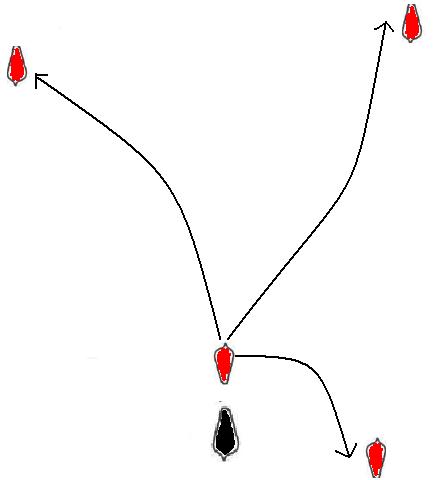Overview
Brief Summary
Distribution
Physical Description
Size
Identification Resources
Ecology
Local Distribution and Habitats
Crypsis
Life History & Behaviour
Defensive Responses
Feeding
Righting
Reproduction and Larval Biology
Growth
Evolution & Systematics
Fossil History
Phylogenetics
Morphology and Physiology
External Morphology
Vision
Conservation
Threats from Humans
References & More Information
Bibliographies
Names & Taxonomy
Related Names and Synonyms | Defensive Responses
When threatened, S. luhuanus has three methods of defense to react to predators/threats. The first method is for it to withdraw into its shell with the operculum covering the shell aperture (Berg, 1974). The second method is for the individual to 'kick' at the predator, which pushes itself away from it, and can be observed when handling the inidividual (video 1). However, this kick breaking the grasp of a predator has not been observed and is thought to be quite innefective as the predator can hold the shell in place while manipulating it (Berg, 1974).
| Video 1: The defensive 'kick' that a stromb performs when being handled |
The third defense response has been studied in more detail. Berg (1974) studied the escape response in S. luhuanus when a molluscivorous cone shell was placed in front of it. He broke the reponses to this stimuli into three parts:
1. Tentacular wave. This was the initial response, where the individuals tentacles on the eyestalks started beating rapidly in all directions. When this response initiated in S. luhuanus individuals, the tentacular wave increased from 3 to 32 beats min-1.
2. Backward flip. This was the next response, where the foot and operculum were pushed forcefully into the substratum, causing the individual to be pushed backwards and away from the cone shell (figure 1). S. luhuanus individuals would backward flip an average of 2.4 times in the experiments before performing the final response.
| |
 |
|
| |
Figure 1: The backward flip response that S. luhuanus individuals displayed when confronted with a molluscivorous cone shell. Figure adapted from Berg (1974) |
|
3. Run. This was the final response, where the propodium (foot) was thrown to the side, causing the individual to turn around, and then the individual 'ran' away in a series of fast leaps until it was at a safe distance from the cone shell (figure 2). The rate of 'running' in S. luhuanus individuals was 23.8cm min-1, and was much faster compared to normal locomotion, which was 1.9cm min-1.
| |
 |
|
| |
Figure 2: The run response that S. luhuanus individuals displayed when confronted with a molluscivorous cone shell. The lines represent paths that the individuals took to evade the cone shell. Figure adapted from Berg (1974) |
|
|
|